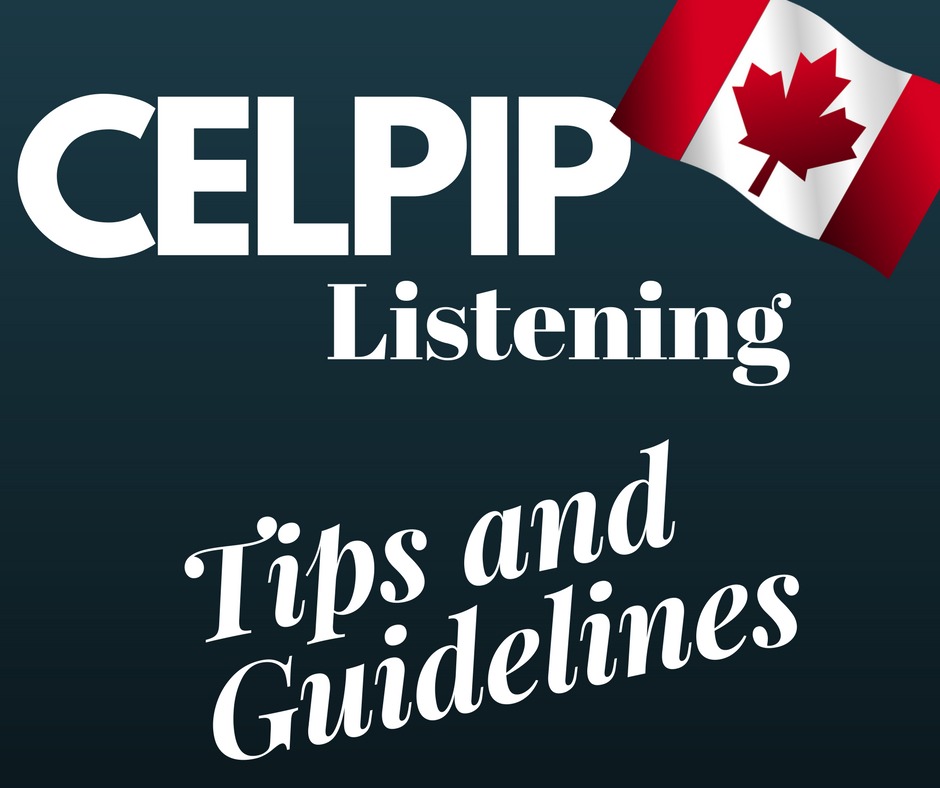CELPIP Listening Test Format
The CELPIP listening test is computer-delivered. This means you will take the test with a computer. It is 50 minutes long. And, it consists of 6 different listening tasks.
There are 38 questions. Some of the questions during this part of the test will be spoken. But, in other parts, the questions will be on the screen.
Either way, these come after the recordings. You may only hear the audio clips and some of the questions once. This will put your listening skills (and short-term memory) to the test.
Below, you will see the 6 parts of the test.
1. Listening to problem-solving
This is the first task. Here, you will hear three conversations between two people. Each conversation is about 90 seconds long. And, you will also hear 2 to 3 questions after each conversation. There are a total of 8 questions for this task.
Usually, here is the situation. Someone is lost. This person needs directions to get to a certain place. So, this conversation has a lot of details about location, direction, and place. You may want to review some prepositions and adverbs of place for this part.
Here is an example.
As you may heard or seen, some of the questions ask about location. But, other questions do not. You have 30 seconds to answer each question.
2. Listening to a conversation
This is similar to part 1. But, there is only one conversation. It is usually a discussion between 2 people. The recording for this task is 2 minutes long. And, there are 5 questions. These will be spoken, not written. You need to choose the best answer to each question in 30 seconds.
You could immediately get an idea of the topic. Often, it is said in the early parts of the conversation.
Check out here to get a better idea.
3. Listening for information
This part of the CELPIP listening test is an interview with an expert on a certain subject or field. The recording is about 2 minutes and 30 seconds long. After that, you need to answer 6 questions.
The expert (not the interviewer) will be doing most of the talking during the recording. Why am I telling you this? So that you would know which person to focus on more. You will find most of the answers in the responses of the expert.
Try this sample test of part 3.

4. Listening to a news item
This part features a news report which is a minute and a half long (90 seconds). And, there are 5 questions after the recording. You have 3 minutes to answer all of these questions. You can do this by selecting the best answers in the drop-down menu. Unlike the first 3 parts of the listening tests, you will be able to read the questions after the recording.
Only one person will speak in the recording, usually (it is a news report, after all). So, you need to do the same thing that you did for part 3.
The is an example of the part of the test.
Expect to encounter questions about the main topic and more specific details like findings (like those in the example) or events.
5. Listening to a discussion
This part is a little different. This time, you will see (that is right, see) a conversation or discussion among three or more people. This discussion could last for up to 2 whole minutes. After listening to this, you have to 8 questions in 4 minutes or (preferably) less.
If you want a better idea of this part of the test, you could check this.
It may seem less intimidating due to the video format. But, remember, this is a discussion involving more than just 2 people. So, you need to listen equally to all three.
6. Listening to viewpoints
After the last task, you will have gotten to this final part of the listening test. The recording is a report. It lasts for 3 minutes. And it is followed by 6 questions. You will have 4 minutes to complete statements by selecting the correct answers.
For this part of the exam, here is a quick tip for you.
Besides information, pay attention to viewpoints or opinions. You can do this by paying close attention to words like “believe”, “think”, “propose”, and “feel”. These often come before the actual opinions.
So, there you have it. These are the 6 parts that make up the CELPIP listening test. Let’s move on to what you can do to improve your listening skills for this part of the test.
How Can I Improve My CELPIP Listening?
For any given test, the best way to prepare is to buy test preparation materials. This is true for the CELPIP test. Nowadays, you could buy CELPIP-related preparation material, both online and offline. For listening, there a lot of sites that offer tips and sample tests.
But, besides these obvious suggestions, there are other things you could do to increase your chances of scoring well on the listening test. This section will cover what you can do before the test and after it.
Tips Before the Test
Here is a list of things you could do to prepare for the CELPIP listening test.
1. Practice using a computer
You can apply this to the other tests of the CELPIP. All parts of the CELPIP test including listening are computer-delivered. This means that you will have to be comfortable with using a computer.
2. Take a sample test
Would you like to know how much you need to improve? The first step is to try a sample test. The main CELPIP site has a sample test that you could take free of charge. This will help you see your listening strengths and weaknesses. Also, you get to see what the test might look like on test day.

3. Read
No! Not printed material!
Watch a movie, video, or television show. Now, if you could switch on subtitles, do so. No, there are no subtitles in the listening test. But, do this, and over time, you will get used to hearing spoken words.
Think of this as training your ears in a fun way. You get to watch something you like and practice your ability to listen. And, there is the added benefit of practicing your reading speed as well.
Like hitting two birds with one stone, right?
But, when this becomes too easy, practice without the subtitles.
4. Practice note-taking
This will come in handy later on. Take notes when you listen or watch anything in English. This will improve your ability to select important information from what you heard.
A good place to start would be to ask yourself some general questions after watching or listening to something. For instance, if you like watching the news, write down the subject of a report. Then, maybe you could include where the report happened.
For good television channels for this purpose, you could tune in to CBC or CTV.
5. Talk to people
Engaging in a conversation is another fun way to develop active listening skills. In a conversation, you could either listen to the other person or make notes. This may even improve your speaking skills at the same time.
6. Train with a timer
You preparing for a test. And, like all tests, the CELPIP listening test is time-pressured. You need to get comfortable with answering questions with a time limit.
7. Expose yourself to social situations
For most students, tasks like asking for directions, shopping (not online), and asking for an opinion are activities that do not feel like practice. Yet, activities like these are! The more they are done, the more trained your listening is likely to be.
Tips for During the Test
On the day of the test:
1. Use the practice task
Before the first listening task is the practice task. Here, you could warm-up, and get familiar with the test’s user interface.
2. Check your equipment
This is pretty obvious. But, it is an important step. You could let the test supervisor know if only one side of the headphones works. And, you may also inform him or her about the screen of your computer if it flickers.
The equipment is the bridge between you and the test itself. So, do not overlook this step.
3. Do not “space out”
In other words, listen fully and carefully to the instructions and recordings. Often, students miss important points because of distractions. Focus is your best friend. For, the recordings do not repeat.
Listen to details, the number of people speaking, and the tone of voice. All of these are important.
4. Take notes
During this part of the test, you may take notes. This might be especially important for the first 3 parts of the test. Why? Because the questions are spoken, not written. Having something to refer to can be very useful. Unless, of course, you have trained your memory as well.
5. Focus on content and context
Content is the information. Context is whether a conversation is pleasant or unpleasant. For context, one thing you could pay attention to is the tone of voice of a speaker.

6. Mind your time
Again, there is a time limit. Do not spend too much time on one item. To help you manage your time, there is a timer on the computer screen. This shows you how much time you have left on a question.
7. Collect your thoughts
There are 10 seconds between each task. You could use this time to take a deep breath and calm yourself for the next part of the listening test.
8. Guess
This strategy is the last resort. Possibly (and quite likely), you may not know the correct answer. The good news is that the listening test is multiple choice. Also, there is no right-minus-wrong rule. Instead of spending too much time on one item trying to figure out the answer, you could guess.
Who knows? You might just get the correct choice. You will have a higher chance of getting the right answer guessing than by not answering because you skipped or ran out of time.
9. Check your answers
At the end of each task, you should check to see if you have clicked all of your choices. Leave no item blank.




